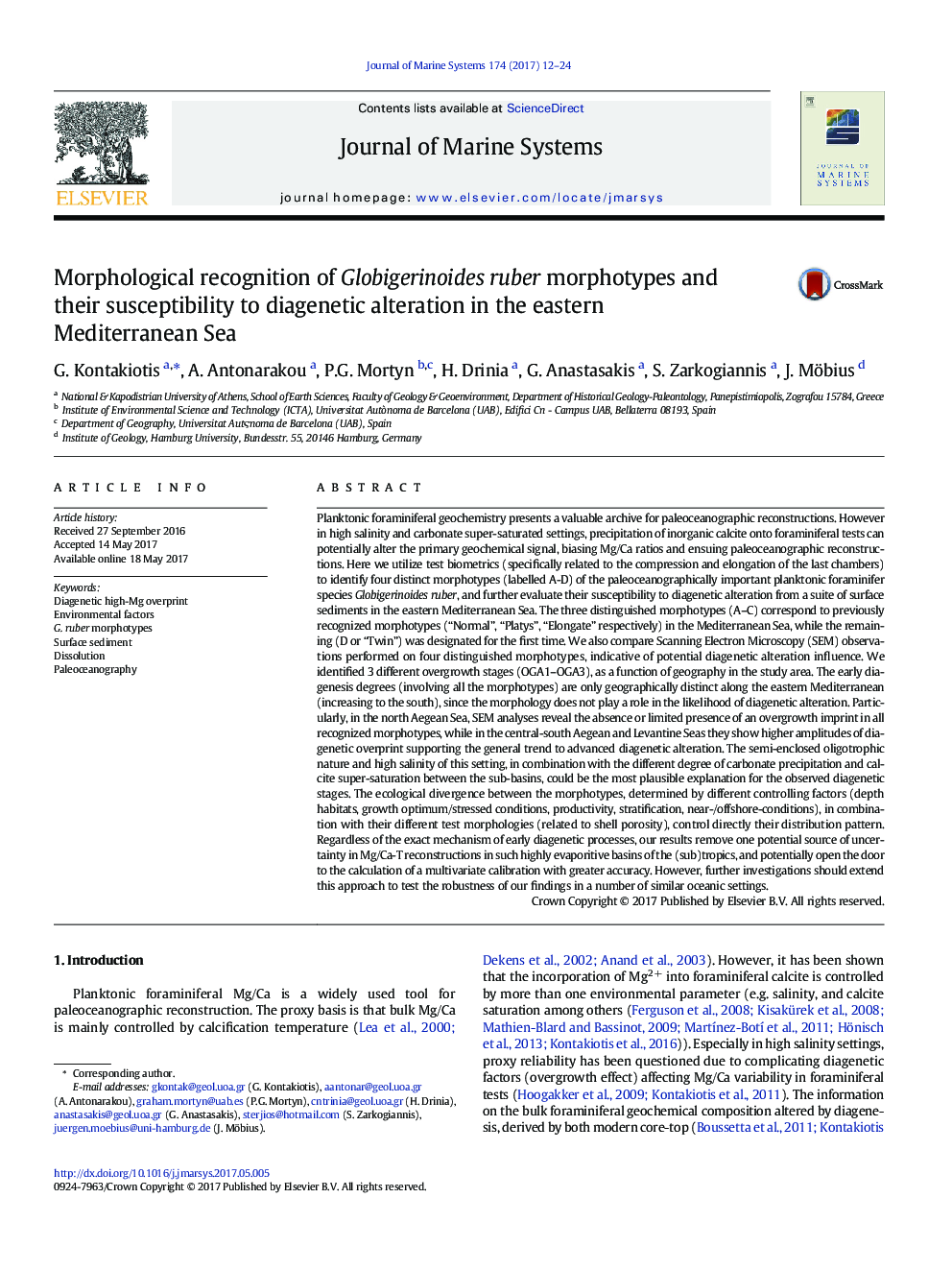| کد مقاله | کد نشریه | سال انتشار | مقاله انگلیسی | نسخه تمام متن |
|---|---|---|---|---|
| 5765959 | 1627256 | 2017 | 13 صفحه PDF | دانلود رایگان |
- Four distinct G. ruber morphotypes are defined based on morphometric criteria.
- All G. ruber morphotypes present the same vulnerability to the overgrowth effect.
- Diagenetic alteration presents a strong geographic signal in a N-S direction.
- We identified 3 diagenetic stages with different overgrowth/dissolution signals.
- Diagenesis ecophenotypically correlates to habitat with different biotic features.
Planktonic foraminiferal geochemistry presents a valuable archive for paleoceanographic reconstructions. However in high salinity and carbonate super-saturated settings, precipitation of inorganic calcite onto foraminiferal tests can potentially alter the primary geochemical signal, biasing Mg/Ca ratios and ensuing paleoceanographic reconstructions. Here we utilize test biometrics (specifically related to the compression and elongation of the last chambers) to identify four distinct morphotypes (labelled A-D) of the paleoceanographically important planktonic foraminifer species Globigerinoides ruber, and further evaluate their susceptibility to diagenetic alteration from a suite of surface sediments in the eastern Mediterranean Sea. The three distinguished morphotypes (A-C) correspond to previously recognized morphotypes (“Normal”, “Platys”, “Elongate” respectively) in the Mediterranean Sea, while the remaining (D or “Twin”) was designated for the first time. We also compare Scanning Electron Microscopy (SEM) observations performed on four distinguished morphotypes, indicative of potential diagenetic alteration influence. We identified 3 different overgrowth stages (OGA1-OGA3), as a function of geography in the study area. The early diagenesis degrees (involving all the morphotypes) are only geographically distinct along the eastern Mediterranean (increasing to the south), since the morphology does not play a role in the likelihood of diagenetic alteration. Particularly, in the north Aegean Sea, SEM analyses reveal the absence or limited presence of an overgrowth imprint in all recognized morphotypes, while in the central-south Aegean and Levantine Seas they show higher amplitudes of diagenetic overprint supporting the general trend to advanced diagenetic alteration. The semi-enclosed oligotrophic nature and high salinity of this setting, in combination with the different degree of carbonate precipitation and calcite super-saturation between the sub-basins, could be the most plausible explanation for the observed diagenetic stages. The ecological divergence between the morphotypes, determined by different controlling factors (depth habitats, growth optimum/stressed conditions, productivity, stratification, near-/offshore-conditions), in combination with their different test morphologies (related to shell porosity), control directly their distribution pattern. Regardless of the exact mechanism of early diagenetic processes, our results remove one potential source of uncertainty in Mg/Ca-T reconstructions in such highly evaporitive basins of the (sub)tropics, and potentially open the door to the calculation of a multivariate calibration with greater accuracy. However, further investigations should extend this approach to test the robustness of our findings in a number of similar oceanic settings.
Journal: Journal of Marine Systems - Volume 174, October 2017, Pages 12-24
